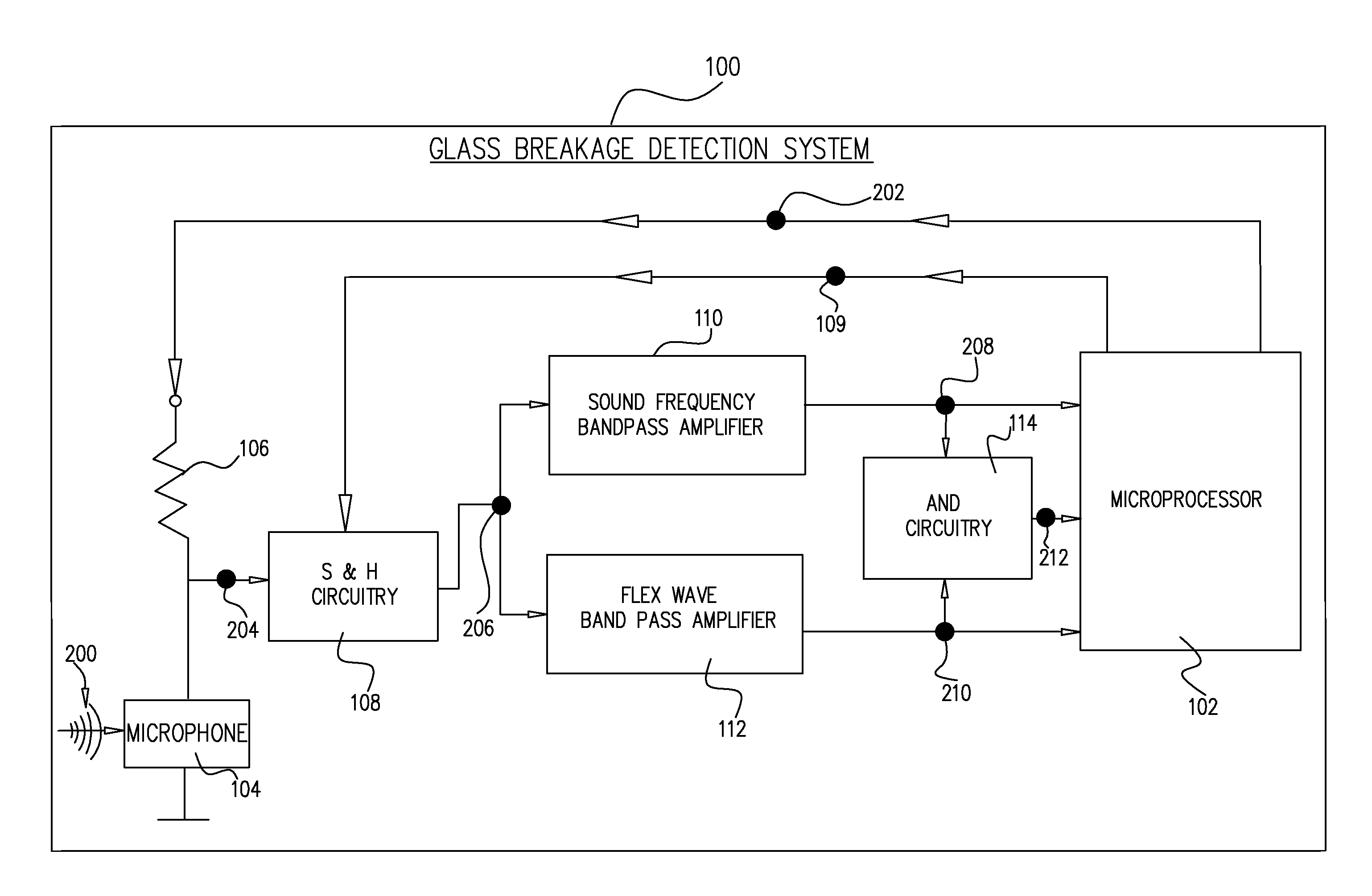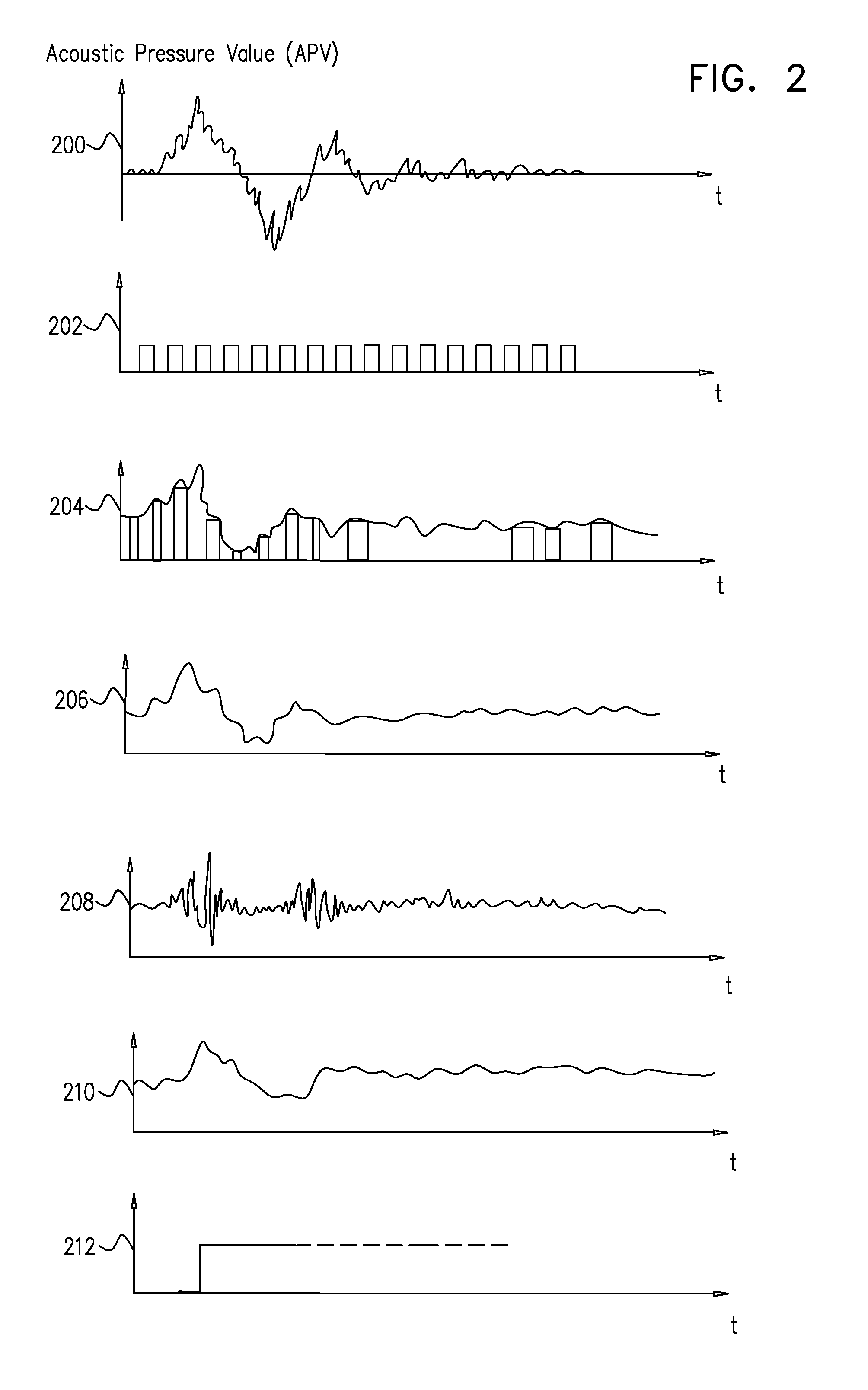Wireless acoustic glass breakage detectors
a technology of acoustic glass and detectors, which is applied in the direction of burglar alarms, burglar alarm mechanical actuation, instruments, etc., can solve the problems of low stand-by current consumption of detectors, ineffective detectors for detecting low frequency sounds in the range of 10 hz-50 hz, and relatively high power consumption
- Summary
- Abstract
- Description
- Claims
- Application Information
AI Technical Summary
Benefits of technology
Problems solved by technology
Method used
Image
Examples
Embodiment Construction
[0019]The present invention seeks to provide a wireless battery-powered power-efficient acoustic glass breakage detector (GBD) which employs buffered electronic microphones to achieve reliable recognition of glass breakage sounds. Preferably, a wide band microphone having a built-in buffer is powered by periodic short voltage pulses, wherein resulting output signal data is periodically stored in a suitable sample & hold (S&H) circuit. Several control schemes may be employed in controlling the pulsed-powered microphone, such as, for example, constant frequency control, variable frequency control and variable duty cycle control.
[0020]The output signal data stored in the S&H circuit is preferably processed only after the microphone detects an initial glass-breakage sound, which is the first sound typically detected in a typical sequence of glass breakage sounds. An initial glass-breakage sound typically includes a coincidence of flex waves and a typical explosion-like sound.
[0021]It is...
PUM
 Login to View More
Login to View More Abstract
Description
Claims
Application Information
 Login to View More
Login to View More - R&D
- Intellectual Property
- Life Sciences
- Materials
- Tech Scout
- Unparalleled Data Quality
- Higher Quality Content
- 60% Fewer Hallucinations
Browse by: Latest US Patents, China's latest patents, Technical Efficacy Thesaurus, Application Domain, Technology Topic, Popular Technical Reports.
© 2025 PatSnap. All rights reserved.Legal|Privacy policy|Modern Slavery Act Transparency Statement|Sitemap|About US| Contact US: help@patsnap.com



